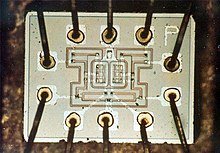Sometimes it is good to look back to the past to see how far we have come in today's technology. With the announcement of the NXP RT 1010 which is a Cortex M7 running at 500 MHz recently, things have moved in leaps and bounds. In the 1960's, the latest technology of the day was found in the NASA program for Apollo 11. The first use of Integrated Circuits was in the Apollo Guidance Computer (AGC) the size of one cubic foot. Read this in Wikipedia for the details. It was composed of boards with 60 ICs on each side for a total of 120 for each board. A marvel for its time, it could not keep up the with calculations in the software and Neil Armstrong had to take over manual control of guidance for the LEM landing on the moon with just 5 seconds of fuel remaining. Enjoy the pictures below thanks to Wikipedia.




Top Comments